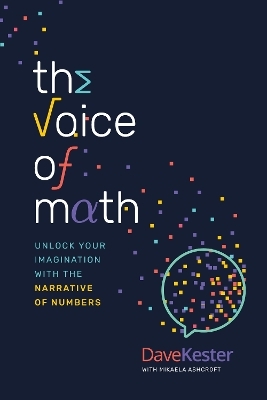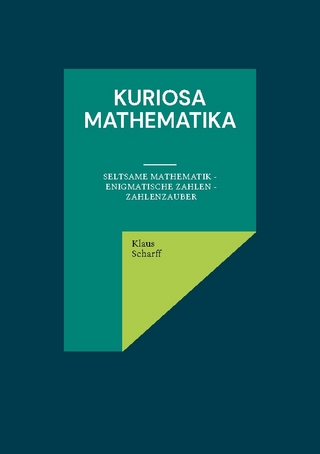
Probabilistic Number Theory II
Springer-Verlag New York Inc.
978-1-4612-9994-3 (ISBN)
In this volume we study the value distribution of arithmetic functions, allowing unbounded renormalisations. The methods involve a synthesis of Probability and Number Theory; sums of independent infinitesimal random variables playing an important role. A central problem is to decide when an additive arithmetic function fin) admits a renormalisation by real functions a(x) and {3(x) > 0 so that asx ~ 00 the frequencies vx(n;f (n) - a(x) :s;; z {3 (x) ) converge weakly; (see Notation). In contrast to volume one we allow {3(x) to become unbounded with x. In particular, we investigate to what extent one can simulate the behaviour of additive arithmetic functions by that of sums of suit ably defined independent random variables. This fruiful point of view was intro duced in a 1939 paper of Erdos and Kac. We obtain their (now classical) result in Chapter 12. Subsequent methods involve both Fourier analysis on the line, and the appli cation of Dirichlet series. Many additional topics are considered. We mention only: a problem of Hardy and Ramanujan; local properties of additive arithmetic functions; the rate of convergence of certain arithmetic frequencies to the normal law; the arithmetic simulation of all stable laws. As in Volume I the historical background of various results is discussed, forming an integral part of the text. In Chapters 12 and 19 these considerations are quite extensive, and an author often speaks for himself.
Volume II.- 11. Unbounded Renormalisations: Preliminary Results.- 12. The Erdös-Kac Theorem. Kubilius Models.- Definition of Class H.- Statement of Kubilius’ Main Theorem.- Archetypal Application of a Kubilius Model.- Analogue of the Feller—Lindeberg Condition.- The Erdös-Kac Theorem.- Turán’s Letter.- Remarks upon Turan’s letter; LeVeque’s Conjecture.- Erdös at Kac’ Lecture.- Kac’ Letter.- Remarks upon Kac’ Letter.- Further Examples.- Analogues on Shifted Primes.- Example.- Further Analogues on Shifted Primes, Application of Lévy’s Distance Function.- Examples.- Additive Functions on the Sequence N-p, p Prime.- Barban’s Theorem on the Normal Order of f(p + 1).- Additive Functions on Polynomials.- Additive Functions on Polynomials with Prime Arguments.- Further Theorems and Examples.- Quantitative Form of the Application of a Kubilius Model.- Concluding Remarks.- 13. The Weak Law of Large Numbers. I.- Theorem Concerning the Approximation of Additive Functions by Sums of Independent Random Variables.- Essential Lemma (Lemma 13.2).- Concluding Remark.- 14. The Weak Law of Large Numbers. II.- Statement of the Main Results.- The Approximate Functional Equation for ?(x).- of Haar Measures.- of Dirichlet Series, Fourier Analysis on R.- Study of the Integrals J.- Approximate Differential Equation.- A Compactness Lemma.- Solution of the Differential Equation.- Further Study of Dirichlet Series.- The Decomposition of ?(x).- Proof of Theorem (14.1) (Necessity).- Proof of Theorem (14.1) (Sufficiency).- Proof of Theorem (14.2).- Concluding Remark.- 15. A Problem of Hardy and Ramanujan.- Theorems of Birch and Erdös.- The Hardy—Ramanujan Problem. Statement of Theorem.- Commentary on the Method of Turán.- Examples.- Concluding Remarks.- 16. General Laws for Additive Functions. I: Including the Stable Laws.- Statement of Isomorphism Theorem.- Stable Laws.- Convergence to Normal Law.- Convergence to Cauchy Law.- Fractional Part of p ? 2, p Prime 13?.- Construction of the Stable Laws.- The Cauchy Law.- Concluding Remarks.- 17. The Limit Laws and the Renormalising Functions.- Growth of?(x), (Theorem (17.1)).- Class M Laws.- Continuity of Limit Law (Theorem (17.2)).- Laws of Class L are Absolutely Continuous (Lemma (17.11), Zolotarev).- Laws Which Cannot Occur.- The Poisson Law.- Further Continuity Properties.- Conjectures.- Conjectures (Summing Up).- 18. General Laws for Additive Functions. II: Logarithmic Renormalisation.- Statement of the Main Theorems.- Example of Erdös.- Non-infinitely Divisible Law.- Concluding Remarks.- 19. Quantitative Mean-Value Theorems.- Statement of the Main Results.- Reduction to Application of Parseval’s Theorem (Lemma (19.5)).- Upper Bounds for Dirichlet Series (Lemma (19.6)).- The Prime Number Theorem.- Axer’s Lemma (Lemma (19.8)).- Primes in Arithmetic Progression; Character Sums.- L-Series Estimates (Theorem (19.9)).- The Position of the Elementary Proof of the Prime Number Theorem in the Theory of Arithmetic Functions.- Hardy’s Copenhagen Remarks.- Bohr’s Address at the International Mathematics Congress.- Elementary Proof of Prime Number Theorem.- Method of Delange.- Method of Wirsing.- Theorem of Wirsing.- Historical Remark on the Application of Parseval’s Identity.- Ingham’s Review.- Concluding Remarks.- 20. Rate of Convergence to the Normal Law.- Theorem of Kubilius and Improvements (Theorem (20.1)).- Examples.- Additive Functions on Polynomials.- Additive Functions on Polynomials with Prime Arguments.- Examples.- Conjugate Problem (Theorem (20.4)).- Example.- Improved Error Term for a Single Additive Function.- Statement of the Main Theorem, (Theorem (20.5)).- Examples.- Concluding Remarks.- 21. Local Theorems for Additive Functions.- Existence of Densities.- Example of Rényi.- Hardy—Ramanujan Estimate.- Local Behaviour of Additive Functions Which Assume Values 0 and 1.- Remarks and Examples.- Connections with Hardy and Ramanujan Inequality.- Uniform Local Upper Bound (Theorem (21.5)).- Concluding Remarks.- 22. The Distribution of the Quadratic Class Number.- Statement of the Theorem.- Approximation by Finite Euler Products.- An Application of Duality.- Construction of the Finite Probability Spaces.- Approximation by Sums of Independent Random Variables.- Concluding Remarks.- 23 Problems.- References (Roman).- References (Cyrillic).- Author Index.
| Reihe/Serie | Grundlehren der mathematischen Wissenschaften ; 240 |
|---|---|
| Zusatzinfo | 375 p. |
| Verlagsort | New York, NY |
| Sprache | englisch |
| Maße | 155 x 235 mm |
| Themenwelt | Mathematik / Informatik ► Mathematik ► Arithmetik / Zahlentheorie |
| Mathematik / Informatik ► Mathematik ► Wahrscheinlichkeit / Kombinatorik | |
| Schlagworte | Wahrscheinlichkeitstheoretische Zahlentheorie |
| ISBN-10 | 1-4612-9994-2 / 1461299942 |
| ISBN-13 | 978-1-4612-9994-3 / 9781461299943 |
| Zustand | Neuware |
| Haben Sie eine Frage zum Produkt? |
aus dem Bereich


